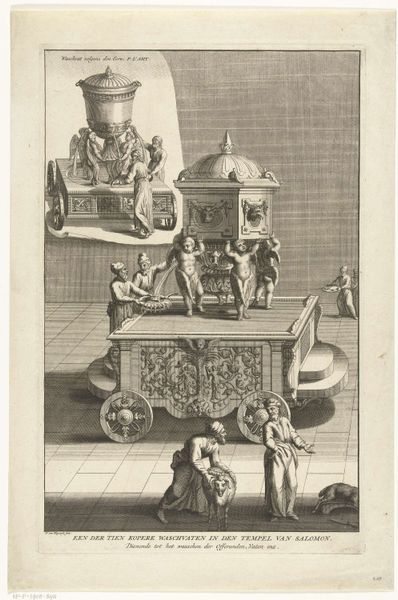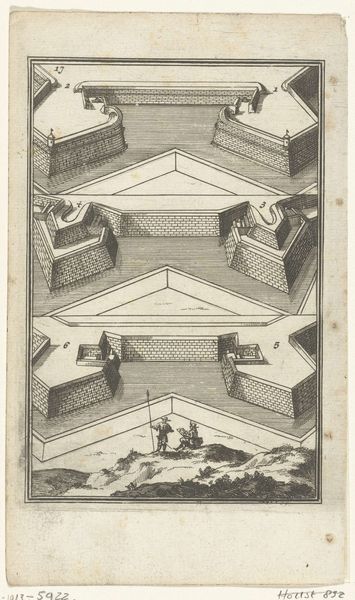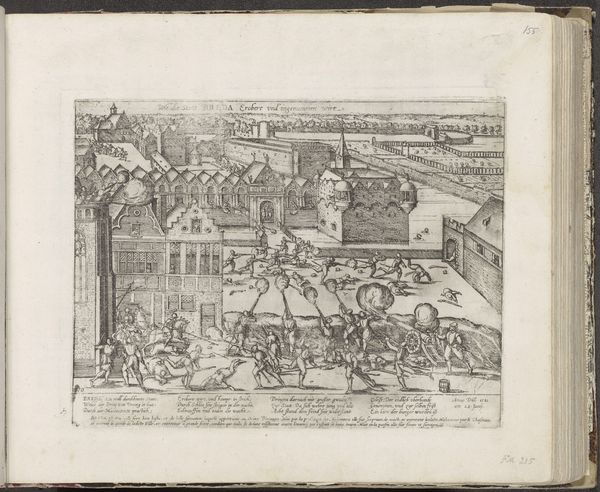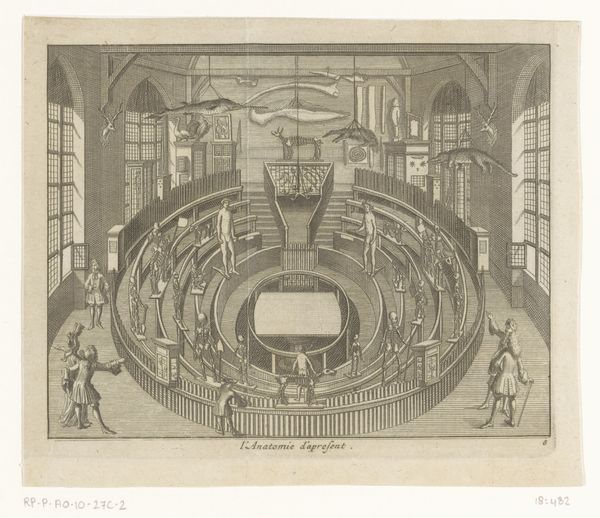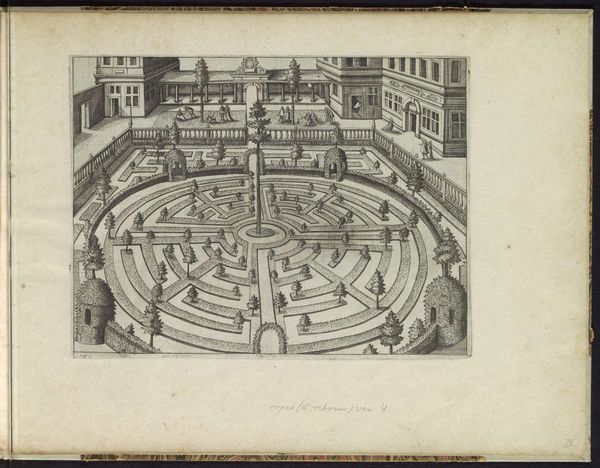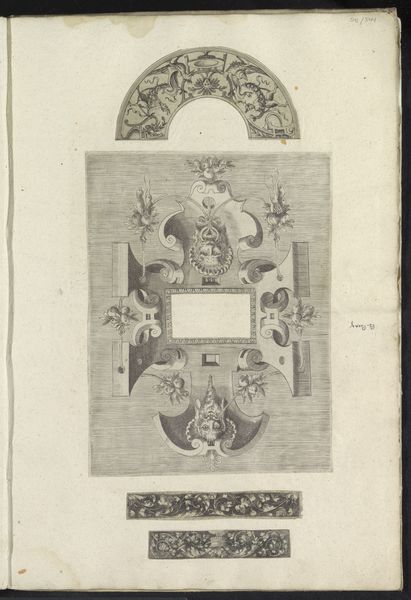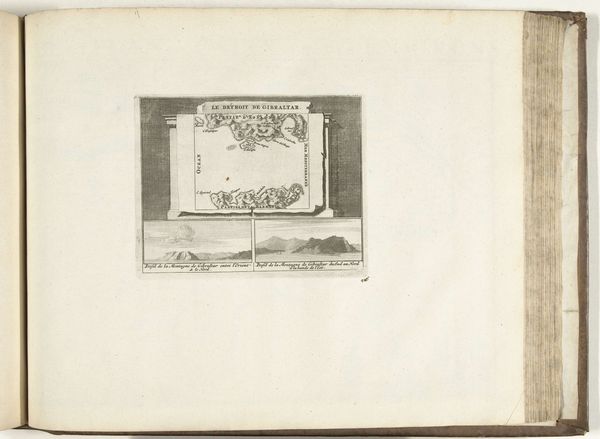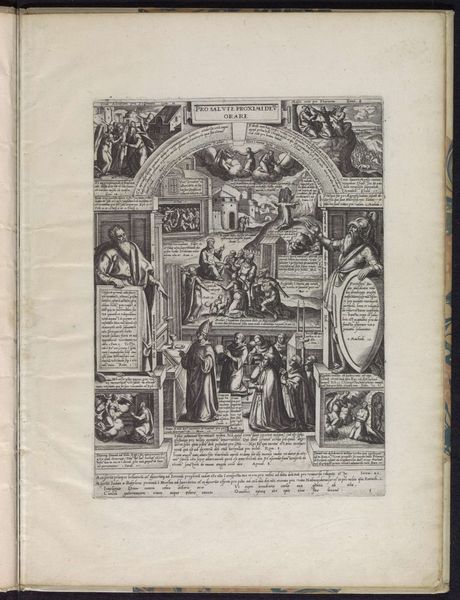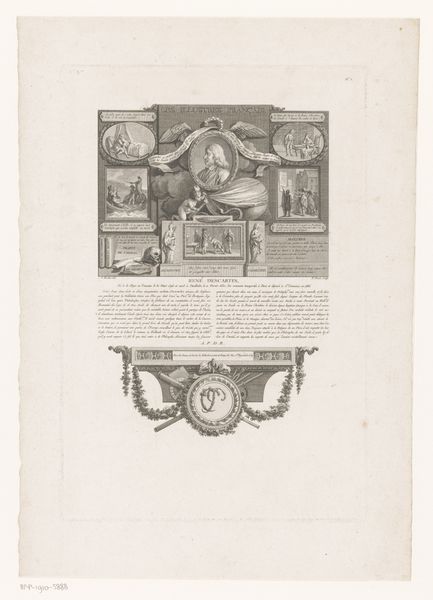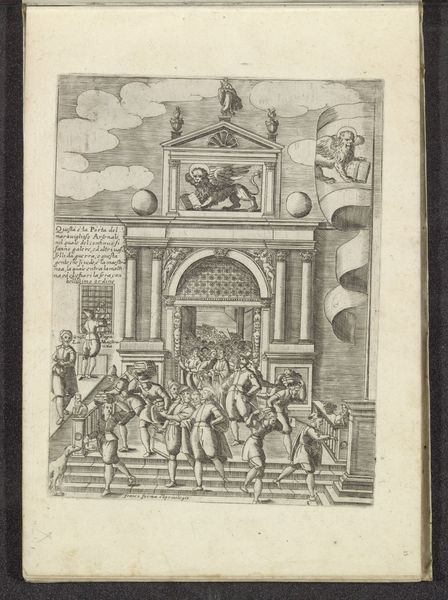
drawing, print, etching, paper, engraving
#
drawing
# print
#
etching
#
paper
#
history-painting
#
academic-art
#
engraving
Dimensions: 315 × 204 mm (image); 354 × 225 mm (plate); 400 × 260 mm (sheet)
Copyright: Public Domain
Curator: What strikes me immediately is how...clinical this image feels, even though it depicts an art studio. It is almost sterile. Editor: Indeed. This is "Design School, from Encyclopédie," an engraving and etching on paper created around 1763. It provides an intimate look into an 18th-century academic drawing classroom. More than just a simple depiction, it reflects Enlightenment ideals of systematized knowledge and institutional education. Curator: So, the somewhat cold precision is very much the point. But even so, those statues in the upper panel – the way they're lit, the specific poses—do they recall anything symbolic, or is it merely about anatomical study? Editor: Well, the sculptures certainly serve a didactic function; they are models for aspiring artists. However, the prominence of classical forms alludes to ideals of beauty, proportion, and heroism. Neoclassicism looked back to ancient Greece and Rome for standards of taste and civic virtue, connecting to ideas about citizenship and governance. Even something like the strategic arrangement of students mirroring the composition shows art's place as structured. Curator: The way the students sit and draw almost robotically; it's as if they are manufacturing art. And juxtapose that with the bottom half which offers more clinical architectural drawing, including seats lined up similar to the classical architectural layouts of Roman amphitheatres where great plays happened. Editor: That's precisely the intention! Note the architectural plan depicted in the lower half. This shows the Enlightenment's attempt to classify and rationalize all fields of knowledge, placing art education alongside architecture and engineering. It conveys a message of state sanctioned progress, as well as France's investment in professionalizing art. Curator: The very act of depicting this learning environment within an encyclopedia speaks volumes about the changing role of the artist. No longer a lone genius, but someone cultivated, regulated by a larger institution and measured approach. Editor: Exactly. "Design School, from Encyclopédie" offers insight into 18th-century academic art and its underlying philosophy. Through both subject matter and its inclusion of other sciences like architectural planning, the image provides context to the evolution of art as a civic pursuit. Curator: Seeing it this way truly pulls it all together.
Comments
No comments
Be the first to comment and join the conversation on the ultimate creative platform.
